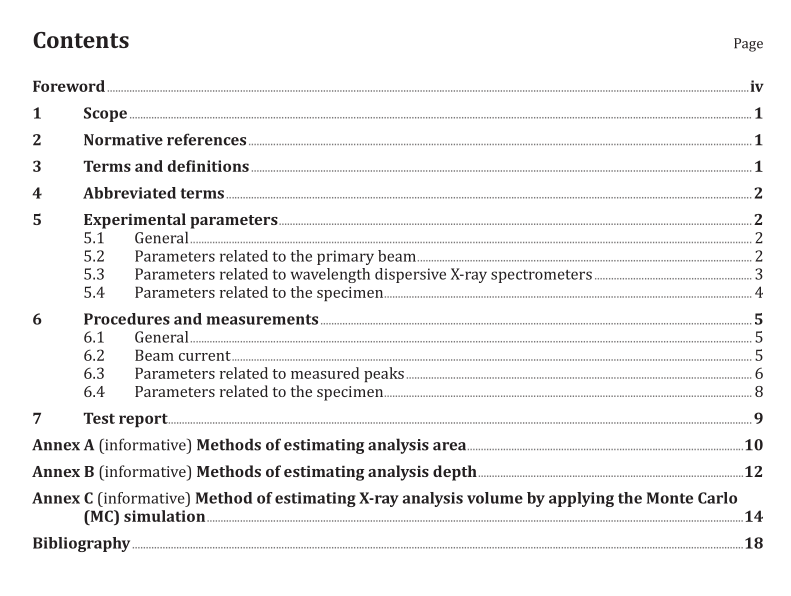ISO 14594 pdf download

ISO 14594 pdf download Microbeam analysis — Electron probe microanalysis — Guidelines for the determination of experimental parameters for wavelength dispersive spectroscopy
5.3.5 Peak location (wavelength) Under normal circumstances, the wavelength which has the maximum peak intensity is used to define the location of an X-ray peak.
It is necessary, using suitable reference materials, to periodically check and correct for the difference in a peak’s theoretical position and its actual measured position on a given spectrometer and diffraction crystal. The time between checks will depend on the stability of the instrument spectrometers.
The measured maximum intensities of peaks which have narrow FWHM values are strongly affected by the errors in peak location. The peak intensity can be changed due to the chemical state and polarization effects.
NOTE 1 If the element in the sample of interest is in a different chemical state than that of the reference material, then the shape of the characteristic X-ray peak might be different for specimen and standard. In this case, the peak maximum might not provide a reliable measure of the total peak intensity and an alternative approach, such as peak area measurements, might be required to obtain reliable results. These chemical state effects are particularly important for X-ray peaks with low energy values.
NOTE 2 If a crystalline sample causes the polarization effects in relation to the position between the sample and the analysis crystal, the peak shape and location can be changed. This can be checked by rotating the sample around an axis perpendicular to the electron beam and observing the effect on peak shape and location. The problem might occur in systems with symmetry lower than cubic and higher than triclinic and is worst when the Bragg angle is close to 45°.
The phenomenon has been found in graphite
[1] and certain borides.
[2] The effect can be much reduced by using peak area measurements.
The position of the peak maximum varies with deviation of the probe from the focal point of the spectrometer on the sample. Calibration measurements and quantitative analysis on the sample should normally be made with the probe in the same position relative to this focal point, and using the same beam defocus or raster setting, if applied. For all quantitative and qualitative analyses carried out using a defocused and scanned beam, the area of the sample surface irradiated should not be so large as to cause a significant fall in X-ray counts from that obtained with the static focused electron beam.
5.3.6 Background The characteristic X-ray peaks are superimposed on a background of continuum X-rays. To properly calculate the intensities of characteristic X-rays, the magnitude of this background needs to be determined and corrected if it is statistically significant. 5.4 Parameters related to the specimen
5.4.1 Specimen stage High precision X, Y, and Z stages allow the sample and standards to be accurately positioned under the electron beam by using an attached optical microscope; the user can set the height of the sample so the axis of the WDX spectrometer and the primary beam position coincide at the surface of the sample. Orthogonality between the electron beam (the optical axis) and the specimen stage is essential in order to perform a proper quantitative analysis. A check on the adjustment of the optical microscope should be included in the routine instrument maintenance schedule.
In an automatic mode of operation, where the measurements are to be made at preset points on the standards and the specimen, it is important to know the reproducibility with which the stage retrieves preset points and to adopt appropriate strategies to overcome any obvious limitations.
5.4.2 Surface roughness For best results, the surface roughness of the specimen should be minimized.









